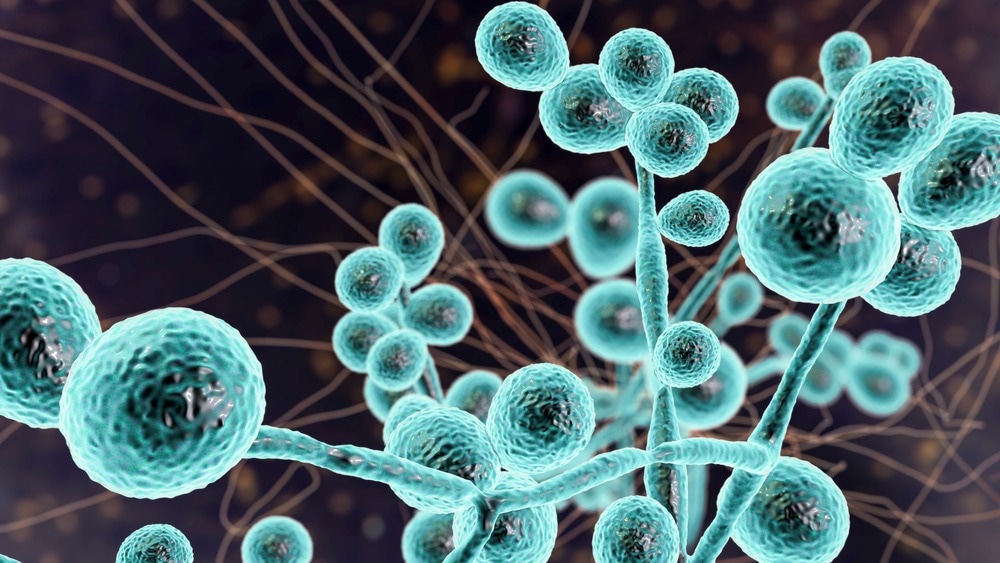In a recent study posted to the bioRxiv* preprint server, researchers evaluated the function of the zinc finger transcription factor ROB1 and its two phenotypically distinct alleles in the pathogenesis of Candida albicans infections.
 Study: The Candida albicans reference strain SC5314 contains a rare, dominant allele of the transcription factor Rob1 that modulates biofilm formation and oral commensalism. Image Credit: Kateryna Kon/Shutterstock.com
Study: The Candida albicans reference strain SC5314 contains a rare, dominant allele of the transcription factor Rob1 that modulates biofilm formation and oral commensalism. Image Credit: Kateryna Kon/Shutterstock.com

 *Important notice: bioRxiv publishes preliminary scientific reports that are not peer-reviewed and, therefore, should not be regarded as conclusive, guide clinical practice/health-related behavior, or treated as established information.
*Important notice: bioRxiv publishes preliminary scientific reports that are not peer-reviewed and, therefore, should not be regarded as conclusive, guide clinical practice/health-related behavior, or treated as established information.
Background
C. albicans, commensal but opportunistic fungal organisms, reside in the oral cavity and the gastrointestinal tract and can also cause mucosal-level and invasive diseases. The organism has displayed significant genomic and phenotypic heterogeneity concerning virulence traits and environmental niches.
Among humans, Candida albicans can cause mucosal candidiasis involving oral and genitourinary mucosae and invasive candidiasis involving the blood, central nervous system (CNS), and abdominal organs such as the spleen and liver.
Biofilms of Candida albicans directly contribute to mucosal disease pathogenesis, whereas biofilms forming on medical equipment, like intravascular-type catheters, indirectly contribute to invasive disease pathogenesis. Research performed to elucidate the transcriptional regulation of biofilm and hyphae formation could guide the development of targeted therapeutics against Candida albicans.
About the study
In the present study, researchers investigated the contribution of ROB1 to the pathophysiology of C. albicans-induced candidal infections.
The team generated deletion mutants of ROB1 in four clinical isolates of Candida albicans with different filamentation phenotypes, i.e., P76067, P75010, P57055, and P87, to assess their effects on filamentation at 30 °C and 37 °C and investigate whether the impact of ROB1 on filamentation varied with strain background. The Spider medium and RPMI medium at 37 °C were used for the analysis, including the SN250 strain, to compare the relative biofilm formation by the four candidal isolates.
Gene expression analysis was performed using quantitative reverse transcription-polymerase chain reaction (RT-PCR) followed by ribonucleic acid sequencing (RNA-seq) analysis of gene expression to compare the gene expression of rob1∆∆ mutants to wild-type (WT) after four hours of hyphal induction in the culture mediums.
The team performed in silico analysis of ROB1 alleles in sequenced Candida albicans genomes. The phenotypes of six rob1∆/ROB1 heterozygotes constructed in the SN/SC5314 background with the parental strain and the rob1∆∆ homozygote were analyzed.
Sanger sequencing of ROB1 was performed for the six isolates to determine their genotypes. ROB1 allelic filamentation was also compared in vivo by intravital imaging of ROB1 mutant-infected murine subcutaneous ear tissues. Biofilm formation was assessed in a murine model of C. albicans vascular catheter infections, a disseminated candidiasis model, and an oropharyngeal candidiasis model.
Results
The SC5314-derived strains showed ROB1 locus heterozygosity, with the two alleles having distinct filamentation phenotypes: one allele encoded a serine (ROB1946S), and the other comprised a proline at position 946 (ROB1946P). At ROB1’s locus, SC5314 showed an allele with gain-of-function characteristics (ROB1946S) under specific conditions. Introducing the ROB1946S allele into a poorly filamenting clinical isolate increased filamentation and conversion of the SC5314 reference strain to a ROB1946S homozygote in weakly and strongly filamenting backgrounds, increasing filamentation in vitro and biofilm generation in vivo.
In the murine model of oropharyngeal infections, the dominant ROB1946P allele established a commensal state, whereas the ROB1946S allele phenocopied the parental strain and invaded the mucosal tissues.
ROB1 affected the formation of biofilms and hyphal morphogenesis based on the inducing conditions and the strain of C. albicans. The rob1∆∆ genetic mutant reduced the reference rob1∆∆ strain filamentation on the Spider culture medium at 37 °C; at 30 °C, the ROB1 mutant showed altered wrinkling patterns in the centre with peripheral invasion, whereas, at 37 °C, smooth colonies were observed lacking peripheral invasion.
P75010 and P57055 showed negligible filamentation, whereas P87 and P76067 showed filaments on both culture mediums. The four clinical isolates and the SC5314-derived SN strain showed distinct patterns of filamentation, as per previous studies.
Only the P76067 and SN250 strains formed >20.0% true hyphae. The candidal isolates developed biofilms, the weakest one formed by P57055. ROB1-regulated genes varied with environmental conditions during hypha formation.
The RNA-seq analysis showed the downregulation of 10 ROB1-dependent hypha-specific genes in the rob1∆∆ genetic mutant in the culture mediums, including the hyphal wall protein-1 (HWP-1), hyphal-regulated gene-1 (HYR-1), SAP-6, ECE-1, and WOR-3. On the contrary, none of the genes were upregulated.
The genes downregulated in rob1∆∆ in the Spider culture medium were involved in pyruvate metabolism, glycolysis, and transport of carbohydrates. Contrastingly, the genes associated with ergosterol, carboxylic and fatty acid biosynthesis, biofilm formation, and adhesion were enriched in the set of genes downregulated in the RPMI medium.
The enriched genes represented carbohydrate metabolism in the Spider medium and lipid or fatty acid metabolism in RPMI. The ROB1946S allele was rare and isolated from the SC5314 strain among 224 sequenced candidal isolates.
Conclusion
Overall, the study findings showed that ROB1 enhanced C. albicans virulence by increasing biofilm formation and filamentation under specific environmental conditions for particular C. albicans strains. C. albicans SC5314 strain was heterozygous at the ROB1 locus with two alleles differing by a single nucleotide polymorphism (SNP) at position 946, resulting in serine- or proline-containing isoforms, of which the gain-of-function ROB1946S improved virulence traits.

 *Important notice: bioRxiv publishes preliminary scientific reports that are not peer-reviewed and, therefore, should not be regarded as conclusive, guide clinical practice/health-related behavior, or treated as established information.
*Important notice: bioRxiv publishes preliminary scientific reports that are not peer-reviewed and, therefore, should not be regarded as conclusive, guide clinical practice/health-related behavior, or treated as established information.